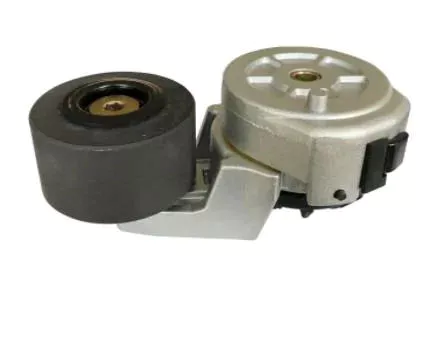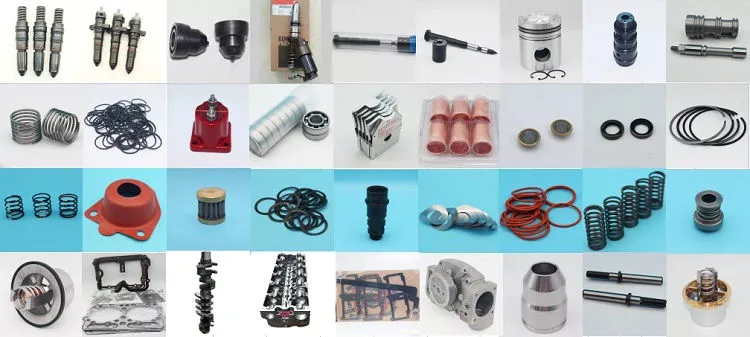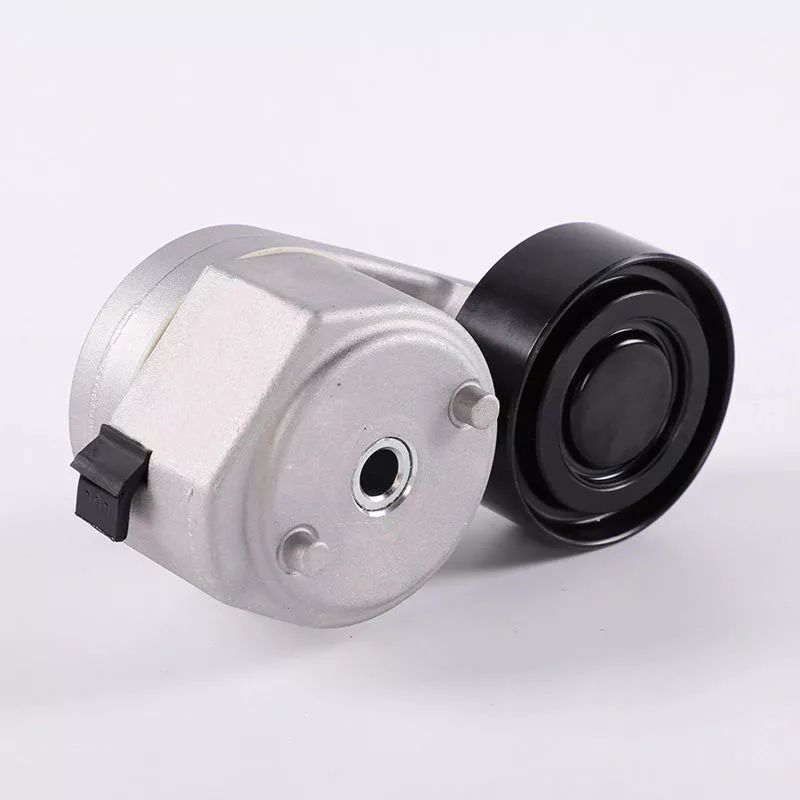Merchandise Description
CZPT Equipment specializes in energy transmission elements:
1. Keyless Locking Units,
two. Timing Belt Pulleys,
three. Nylon Sleeve Couplings,
four. Jaw Couplings,
5. Shaft Collars Correcting Collar,
6. Spur Gears and other components,
seven. Torque Limiters,
eight. Mechanical Elements created-to-buy
· Ubet Keyless Locking Devices are utilized in rotating machinery, making clamping pressure in between surface of locking system and shaft to develop adjustable and releasable mechanical relationship, so as to clamp gears, pulleys and other components to a shaft without having threads or keys
Resources of CZPT Locking Unit are offered in:
Carbon Metal S45C, C45E, 1045, 40Cr, 42CrMo4V
Stainless Metal AISI431, AISI304
· Ubet Equipment Timing Belt Pulleys and Toothed Bars/ Timing Bars.
Normal and non-standard pulleys in accordance to drawings are offered.
Materials of CZPT Timing Belt Pulleys are accessible in:
AlCuMgPb 6061 6082 Aluminum Timing Pulley
C45E 1045 S45C Carbon Steel Timing Pulley
GG25 HT250 Solid Iron Timing Pulley
SUS303 SUS304 AISI431 Stainless Steel Timing Pulley
Other materials on demand, this sort of as cooper, bronze and plastic
· Ubet Jaw couplings are created as 3 piece mix, such as 2 hubs and 1 elastomer produced of polyurethane. The curved jaw fits CZPT the spider, which minimizes shock to the motor and other sensitive products.
Content: Alluminum for dimension under forty two
Steel for size above 42
Finish: All-natural or Anodizing
Size Assortment: 19 to seventy five
Concluded bore: according to ISO suit H7
Keyway width: in accordance to DIN 6885/one
The Tolerance of keyway is Js9
| Procedure | Equipment | Precision Diploma | Machining range |
| Blank Making | Resin bonded sand creation lineVertical parting flaskless molding line,146 opening production lineElectric furnace CZPT cupola Guillotine shear,Punching device Forge rolling equipment Precision die forging machine | precision solid precision forging precision molding | All types of casting and forging elements |
| Heat Therapy | Vertical furnace Speckled furnaceHigh frequency quenching furnace | Material hardness transformation≤HRC1 | Hardening and Tempering Quenching High frequency quenching Carburizing and quenching |
| Machining | Specific NC equipment | Dimesion tolerance 6 degree Roughness Ra0.8 Roundness,straightness and concentricity accuracy≤0.01mm | interior hole≥5mm, outside the house diameter ≤800mm |
| Grinding machining | NC excircle grinding device Surface grinding device | Dimesion precision 5 diploma Roughness Ra0.four | Outside the house diameter 3mm to 320mm |
| Teeth-profile Creating | NC gear hobbing maching gear slotting equipment | Roughness Ra1.6 Concentricity .05 | Highest module M=10, OD≤1800mm |
| Hobbing and drilling | CNC machinedrilling machineNC milling equipment | Gap dimesion tolerance 6 degree positioning precision .05 | Workbench leghth 1650mm width 852mm bare minimum diameter 1mm |
| Other Machining | Hydraulic broaching device sawing device punching machine lather labeling device | keyway tolerance 7 degree symmetry degree .05 | spline straight keyway spline keyway |
| Surface area Treatment method | sprucing equipment plating creation line spray-portray linecoating lineoxidizing line phosphating line | In accordance with European normal RoHS. | Surface polishing Cr6+free of charge zinc plating,Nickle hard chromium Ornamental chrome platingNicklePaiting phosphating AnodizingblackeningDacrotized |
|
US $0.9 / Piece | |
1 Piece (Min. Order) |
###
| Pulley Sizes: | Timing |
|---|---|
| Manufacturing Process: | Sawing |
| Material: | Steel,Aluminum,Stainless Steel |
| Surface Treatment: | Black Oxide, Phosphating, Nickel Plating |
| Application: | Chemical Industry, Grain Transport, Mining Transport, Power Plant |
| Power Lock: | as, Rfn7012, Tlk200 |
###
| Samples: |
US$ 3/Piece
1 Piece(Min.Order) |
|---|
###
| Customization: |
Available
|
|---|
###
| Process | Equipment | Precision Degree | Machining range |
| Blank Making | Resin bonded sand production line;Vertical parting flaskless molding line,146 opening production line;Electric furnace; Furnace cupola; Guillotine shear,Punching machine; Forge rolling machine; Precision die forging machine; | precision cast; precision forging; precision molding | All sorts of casting and forging parts |
| Heat Treatment | Vertical furnace; Speckled furnace;High frequency quenching furnace | Material hardness transformation≤HRC1 | Hardening and Tempering; Quenching; High frequency quenching; Carburizing and quenching |
| Machining | Precise NC machine | Dimesion tolerance 6 degree; Roughness Ra0.8; Roundness,straightness and concentricity accuracy≤0.01mm | inner hole≥5mm, outside diameter ≤800mm |
| Grinding machining | NC excircle grinding machine; Surface grinding machine | Dimesion precision 5 degree; Roughness Ra0.4 | Outside diameter 3mm to 320mm |
| Teeth-profile Making | NC gear hobbing maching; gear slotting machine | Roughness Ra1.6; Concentricity 0.05 | Maximum module M=10, OD≤1800mm |
| Hobbing and drilling | CNC machine;drilling machine;NC milling machine | Hole dimesion tolerance 6 degree; positioning accuracy 0.05 | Workbench leghth 1650mm; width 852mm; minimum diameter 1mm |
| Other Machining | Hydraulic broaching machine; sawing machine; punching machine; lather labeling machine | keyway tolerance 7 degree; symmetry degree 0.05 | spline; straight keyway; spline keyway |
| Surface Treatment | polishing machine; plating production line; spray-painting line;coating line;oxidizing line; phosphating line | In accordance with European standard RoHS. | Surface polishing; Cr6+free zinc plating,Nickle hard chromium; Decorative chrome plating;Nickle;Paiting; phosphating; Anodizing;blackening;Dacrotized |
|
US $0.9 / Piece | |
1 Piece (Min. Order) |
###
| Pulley Sizes: | Timing |
|---|---|
| Manufacturing Process: | Sawing |
| Material: | Steel,Aluminum,Stainless Steel |
| Surface Treatment: | Black Oxide, Phosphating, Nickel Plating |
| Application: | Chemical Industry, Grain Transport, Mining Transport, Power Plant |
| Power Lock: | as, Rfn7012, Tlk200 |
###
| Samples: |
US$ 3/Piece
1 Piece(Min.Order) |
|---|
###
| Customization: |
Available
|
|---|
###
| Process | Equipment | Precision Degree | Machining range |
| Blank Making | Resin bonded sand production line;Vertical parting flaskless molding line,146 opening production line;Electric furnace; Furnace cupola; Guillotine shear,Punching machine; Forge rolling machine; Precision die forging machine; | precision cast; precision forging; precision molding | All sorts of casting and forging parts |
| Heat Treatment | Vertical furnace; Speckled furnace;High frequency quenching furnace | Material hardness transformation≤HRC1 | Hardening and Tempering; Quenching; High frequency quenching; Carburizing and quenching |
| Machining | Precise NC machine | Dimesion tolerance 6 degree; Roughness Ra0.8; Roundness,straightness and concentricity accuracy≤0.01mm | inner hole≥5mm, outside diameter ≤800mm |
| Grinding machining | NC excircle grinding machine; Surface grinding machine | Dimesion precision 5 degree; Roughness Ra0.4 | Outside diameter 3mm to 320mm |
| Teeth-profile Making | NC gear hobbing maching; gear slotting machine | Roughness Ra1.6; Concentricity 0.05 | Maximum module M=10, OD≤1800mm |
| Hobbing and drilling | CNC machine;drilling machine;NC milling machine | Hole dimesion tolerance 6 degree; positioning accuracy 0.05 | Workbench leghth 1650mm; width 852mm; minimum diameter 1mm |
| Other Machining | Hydraulic broaching machine; sawing machine; punching machine; lather labeling machine | keyway tolerance 7 degree; symmetry degree 0.05 | spline; straight keyway; spline keyway |
| Surface Treatment | polishing machine; plating production line; spray-painting line;coating line;oxidizing line; phosphating line | In accordance with European standard RoHS. | Surface polishing; Cr6+free zinc plating,Nickle hard chromium; Decorative chrome plating;Nickle;Paiting; phosphating; Anodizing;blackening;Dacrotized |
Types of pulleys and their advantages and disadvantages
There are several types of pulleys. Learn the basic equations of the pulley system. Then learn about the different uses for pulleys. The disadvantages of using pulleys will be covered. Knowing these, you can buy the pulley that suits your needs. Here are some of the best pulley types and their pros and cons.
Basic equations of pulley systems
A pulley system is a mechanism that allows two blocks of a certain mass to be connected by a taut rope. The acceleration of each block is the same in magnitude and direction. The external force acting on each block is the weight of the block (10g) and the tension in the string. The tension between the two blocks is the total tension and the force acting on the pulley is the weight of the two blocks.
This simple mechanism uses two simple equations to explain how the system works. First, the mass of the weight on both sides of the pulley must be the same. When the weight is forced to move, the rope tightens and the second pulley descends. The weight is also attached to the second pulley and must be the same distance as the first pulley. This will result in a speed ratio of 2 times the distance covered by the first pulley.
Second, we have to calculate the force required to lift the object. The lower mass is supported by a wire configuration passing through all pulleys, while the uppermost pulley is used to apply the force. The lower block is used to support the weight. The applied force needs to travel a distance nx to move the weight. This distance, called MA, can be written as:
Once we have gathered the necessary information, we can apply the calculations to the pulley system. We can also use the Mechanical Advantage Calculator to calculate the force on the anchor. To do this, we must apply a force to the load as well as to the pulley itself. Using this equation, we can calculate the force required by the load to lift the load.
Types of pulleys
There are three basic types of pulleys: movable, fixed and compound. Both types of pulleys translate the force applied to them. The ideal mechanical advantage of pulleys is two. This is because a single movable pulley only doubles the force, whereas a compound pulley doubles or triples the force. This type of pulley is often used with other types of pulleys.
Movable pulls move with the weight of the load, and the force pulling them increases on the lift side. They are often found in utility elevators and construction cranes. These systems are very simple, inexpensive and quiet to use. The force required to lift the object depends on the mechanical advantage of the system. The two most common types of pulleys are listed below. Let's take a closer look at each one.
V-shaped pulleys are used in vehicles and electric motors. These pulleys require a "V" belt to function properly. Some have multiple "V" grooves to avoid slipping. They are used in heavy duty applications to reduce the risk of power slip. These pulleys also have more than one "V" groove. V-belt pulleys are commonly used in vehicles and electric motors.
Composite pulleys are made from more than one type of cable or rope wrapped around the wheel. They can be fixed or hinged and are usually made of stainless steel or bronze. Composite pulleys have multiple layers and can be a single unit or many different components. There are three main types of pulleys: fixed pulleys and composite pulleys. These are the most common types. Almost every type of pulley is used for some type of application.
Fixed pulleys have one advantage over movable pulleys: they change direction as the weight of the load increases. They are typically used in heavy construction equipment. Gun tackles, patio tackles, and stationary tackles are examples of equipment that use a pulley mechanism. These devices are very common and can be found on most modern construction sites. They provide great convenience for lifting large loads.
application
What are the applications of pulleys? Simply put, a pulley is a mechanical device that transforms a difficult task into an easier one. It consists of ropes and pulleys. It is usually used to lift objects. Usually, people wrap a rope around a pulley and pull up to lift the object. One disadvantage of using pulleys is that they require the same force as lifting the object directly.
One of the most popular applications of pulleys is lifting heavy objects. They help people pull up heavy objects and blocks. The system can also be used in seeders, lifts, grinders, etc. Other applications include raising flags, loading cargo, pulling curtains and rock or mountain climbing. Students can learn about the various uses of pulleys and the physics behind them.
Pulleys can be made of many different materials, depending on the application. Some are movable, which means they move with the object they are used to lift. This pulley system can be made of nylon, wire rope or fiber material. The best part about these systems is that they are easy to install and maintain. For a better grasp, use the guide or video tutorial to learn more about the pulley system and how it works.
Tapered pulleys are common in paper mills. They are high-quality pulleys that transmit power to connected parts. They can be dynamic or static and have different balances. Because pulley systems are highly customized, most industrial applications require systems designed specifically for specific applications. In this way, the system is safe, simple and inexpensive. The benefits of this design are endless.
The most common use of pulleys is for motor drives. They are used to minimize noise by applying force to the shaft to reduce the workload. They are also less expensive than gears and do not require lubrication. Furthermore, they can change the direction of the applied force. They are also less expensive than gears and are often used with other components. A screw is a cylindrical member with helical ribs used to connect something.
shortcoming
Although the pulley system makes it easier to move heavy objects, it still has some drawbacks. When using a pulley system, you must remember that the force required to lift the weight increases with the number of cycles. In addition, the distance between the puller and the heavy object increases, which may lead to accidents. Also, moving heavy objects can be tricky if the rope slips. Pulley systems are not very expensive and can be easily assembled. However, it does require a lot of space.
First, it is not efficient. Besides being inefficient, pulleys produce different forces at different speeds. Fixed pulleys use more force than the load, while movable pulleys move with the load. A movable pulley requires less force than a fixed pulley, but the combined system travels a long distance. Therefore, this method is not as efficient as the fixed method.
Pulleys are not only used in industrial processes. You can see them in various places in your daily life. For example, large construction cranes use pulleys to lift heavy loads. Even flagpoles, blinds, clotheslines, ziplines, motors and climbing equipment use pulleys. Still, despite their advantages, the disadvantages are not too serious.
Another disadvantage of the pulley is its wear and tear. While a pulley's housing is theoretically infinite, its bearings and locking components typically wear out over time. To overcome this problem, a new bearing and locking assembly can be installed. No need to replace the housing and shaft, the entire assembly can be re-bonded and painted to replicate the original look. Alternatively, the pulley can be replaced with a new housing and shaft.
Using pulleys can also reduce the advantage of pulleys. On the other hand, interception and tackle is a system in which two pulleys are connected to each other using ropes. Unlike pulleys, pulley pulley systems can be adjusted in the direction of travel and can move heavy loads up to four times their force when used in hydraulic lifts.


editor by czh 2022-12-21







